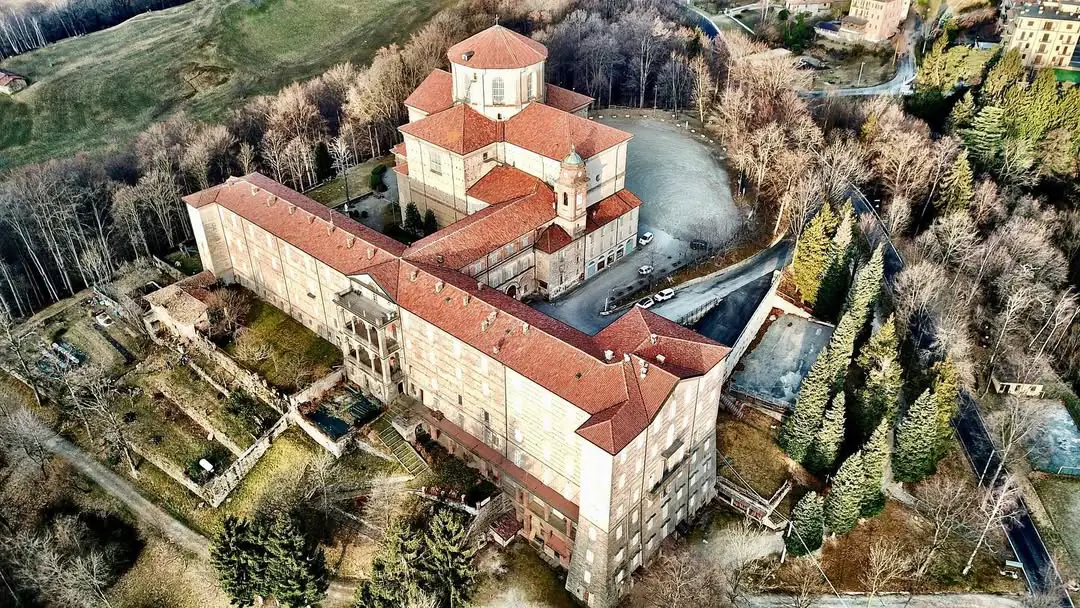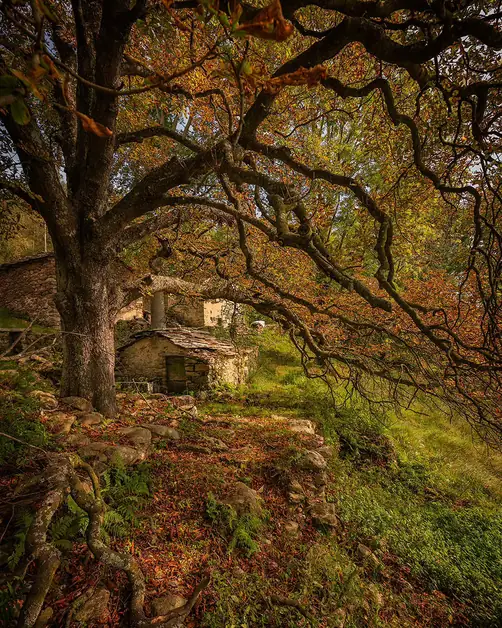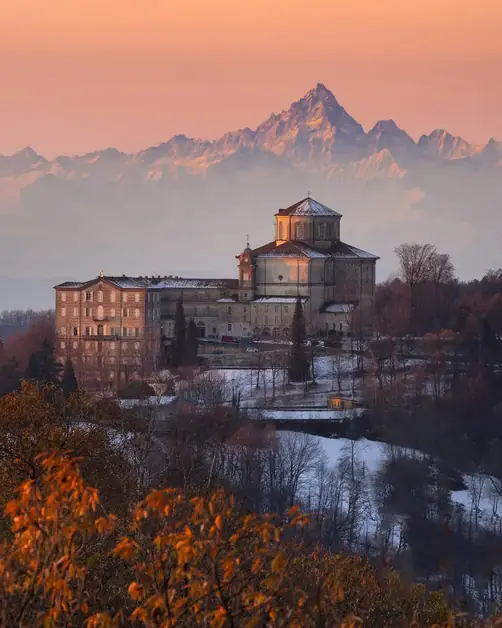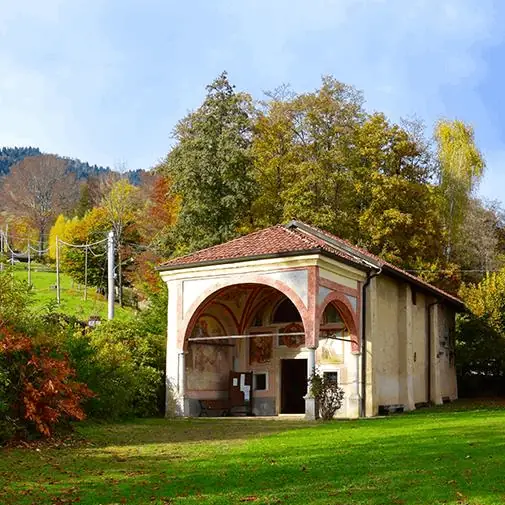The Sanctuary of Graglia between faith and history
The Sanctuary of Graglia is a place of faith and history in Biella.

What is the Sanctuary of Graglia and where does its history come from?
The Sanctuary of Graglia has its roots in the great dream of Don Nicolao Velotti, who in 1615 envisioned an extraordinary project: the construction of a Sacred Mountain with one hundred chapels, arranged along the path connecting the village of Graglia to Colle San Carlo. This path was meant to represent, through scenes and statuary groups, the main episodes of the Christian Faith, from Creation to the life of Jesus and his divine glory. It was a visionary idea, capable of uniting art, faith, and nature in a single spiritual itinerary.
How did the Chapel of the Holy House of Nazareth come about?
In 1617, at about 800 meters above sea level, the Chapel of the Holy House of Nazareth was built, inspired by the famous Sanctuary of Loreto. Inside, a statue of the Lauretana Madonna, sculpted in 1620, was placed, which soon became an object of great popular veneration. This chapel quickly became the heart of Marian devotion and the first nucleus of the future sanctuary. Pilgrims began to arrive in large numbers from all over Piedmont, attracted by the fame of miracles and the serenity of the place, immersed in the greenery of the Biella mountains.
What happened after the death of Don Nicolao Velotti?
After the founder's death in 1626, the original project of the Sacred Mountain suffered a significant slowdown. Economic difficulties and the complexity of the undertaking prevented the realization of the one hundred chapels planned. However, the dream was not forgotten: thanks to Don Agostino Dal Pozzo, the Chapel of the Holy House was chosen as the fulcrum of a new Sanctuary, simpler but equally grand in its architectural and spiritual conception.
Who were the protagonists of the construction of the Sanctuary of Graglia?
The new project took shape thanks to the support of Duke Carlo Emanuele II of Savoy, who recognized its religious and cultural value. Engineer Pietro Arduzzi was commissioned to design the church, choosing a Greek cross plan topped by a monumental dome, a symbol of harmony and perfection. Around the church, buildings were constructed to accommodate pilgrims, clergy, and devotees, creating an imposing and welcoming religious complex. The first stone was laid in 1659, but the works continued for over a century, slowed down by wars, epidemics, and lack of funds. Only in the second half of the 18th century, thanks to the tenacity of Don Carlo Giuseppe Gastaldi, defined as the "second founder," could the Sanctuary of Graglia be considered completed.
What does the statue of the Lauretana Madonna represent today?
The statue of the Lauretana Madonna, sculpted in 1620 and having survived intact through the centuries, is still housed in the Sanctuary. Placed to the left of the main altar, inside a glass case, it continues to be the center of devotion and prayer for the faithful. Every year, thousands of pilgrims and tourists come to Graglia to venerate it and to find a moment of spiritual reflection in an environment of extraordinary peace.
What is the architecture of the Sanctuary of Graglia like?
The Sanctuary of Graglia impresses with its elegance and proportion. The imposing façade leads into a bright and harmonious interior, where the central dome dominates the nave and creates an effect of grandeur and tranquility. The spaces are organized to welcome and guide the visitor on a spiritual journey: the main altar, the side chapels, and the baroque decorations invite contemplation. The complex also includes porticoes, courtyards, and hospitality structures that open onto the surrounding landscape, offering spectacular views of the Biella mountains.
What role has the Sanctuary played in the religious history of Piedmont?
Since its origins, the Sanctuary of Graglia has represented a point of reference for Marian devotion in northern Italy. Together with the Sanctuaries of Oropa and Crea, it forms a triad of sacred places that testify to the deep faith of the Piedmontese people. Over the centuries, it has been not only a destination for pilgrimages but also a place of culture and hospitality. The priests who have guided it have contributed to preserving its artistic and spiritual integrity, making it one of the most beloved destinations for travelers seeking silence and spirituality today.
What can you do today at the Sanctuary of Graglia?
In addition to spiritual and cultural visits, the Sanctuary offers the possibility to stay in its accommodation facilities. Visitors can sleep in the comfortable rooms provided by the complex, ideal for a stay of peace and meditation. The rooms, simple yet welcoming, offer everything necessary to experience a tranquil experience immersed in nature. It is a perfect opportunity for those who wish to spend a few days away from the noise of the city, rediscovering the value of silence and spirituality.
Is the Sanctuary of Graglia accessible all year round?
Yes, the Sanctuary is open all year round and can be visited freely. In the spring and summer months, the surrounding gardens fill with flowers, while in autumn the woods take on warm and suggestive colors. Even in winter, covered in snow, the complex takes on a particular, almost mystical charm.
How do you reach the Sanctuary of Graglia?
The Sanctuary is located a few kilometers from Biella and is easily reachable by car. The road leading up to Graglia is scenic and well-maintained, with gentle curves offering glimpses of the mountainous landscape. For those who prefer public transport, there are regular bus connections from Biella that stop near the Sanctuary. It is also an ideal stop for hikers and pilgrims traversing the religious paths of Biella.


